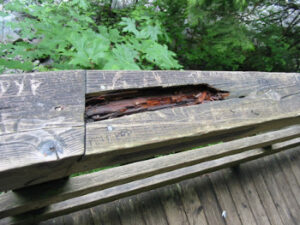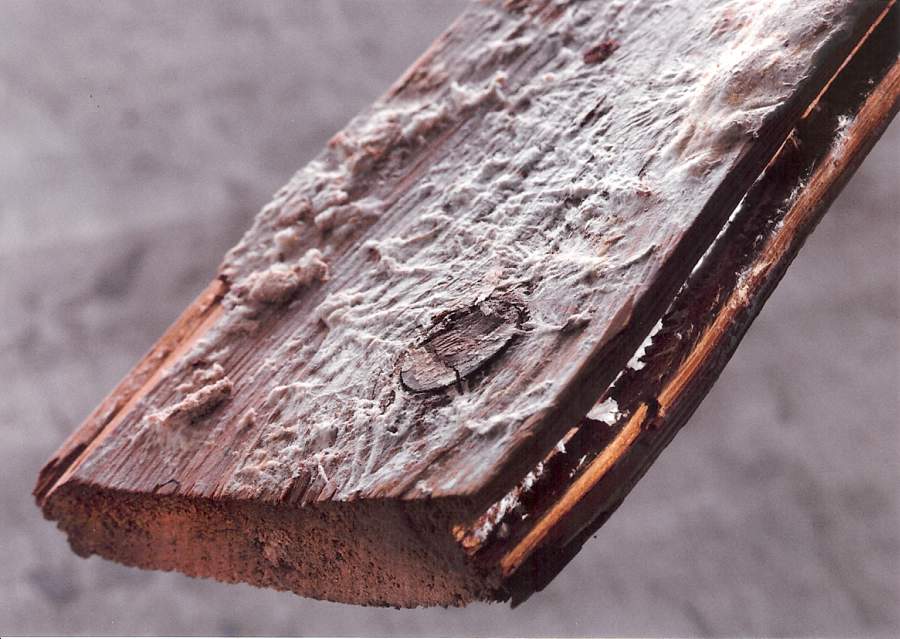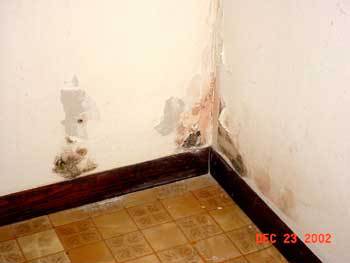Wood Decay Can Be A Rotten Situation for Homeowners

We should all be grateful for insect and fungi that decompose wood. They play a vital role in converting dead trees and other organic matter into soil. However, as a homeowner we tend to be understandably less appreciative. Wood rot in our homes not only looks bad but can lead to serious structural problems in the house. Serious structural problems is another way to say serious cost problems because wood decay that has advanced into the structural members of a house can easily cost thousands if not tens of thousands to repair depending on many factors such as the size of the house and severity and distribution of the decay problem.
Wood is the most common building material, and it has many advantages. However, one disadvantage is its susceptibility to wood decay fungi. This post will help homeowners to understand what causes wood rot, how to prevent it, and what to do if you discover it. The key word is “discover” because rot, especially advanced rot, is often hidden under flooring, sheetrock, or siding.
What Causes Wood To Rot?
Wood rot is the decay of wood caused by certain wood degrading fungi species. For a fungus to be active in wood, there are four essential elements – air, temperature, moisture, and food. If you remove one of the four elements, you can eliminate the risk of fungal damage. Fungi need temperatures of 50 – 110 F for active growth. If the temperature is outside of this range, it is dormant; temperature over 130 F is toxic to most fungi. Fungi typically need at least 25 percent moisture content in the wood to be active.
If you are like me and like to eat mushrooms, you eat fungi. There are as 5 million types of fungi in the air and soil around us. Some are beneficial and others are destructive. The types that cause wood rot are classified into one of three categories.
- Brown Rot: These fungi preferably attack cellulose in hardwood species. The wood surface appears dry, brown-rot fungi targets cellulose in the wood’s structure. As the cellulose is destroyed, the wood shrinks, turns deep brown in color, and breaks into small cube-shaped bits. It can spread rapidly under favorable conditions.
- White Rot: These fungi preferably attack lignin in softwood (coniferous) species. These fungi typically cause the wood to appear whitish or light yellow and feels spongy. Pure cellulose is white in color so white rot fungi attack lignin and leave the cellulose behind. So, the attack is whiteish in color.
- Soft Rot: Soft-rot fungi decompose wood more slowly than brown-rot fungi and white-rot fungi. However, these fungi can live in temperatures too extreme for other fungi to survive, between 0 and 110 degrees F. Soft-rot fungi break down cellulose and the decayed wood has a “honeycomb-like” appearance. This fungi are usually found in fallen logs and trees, but can occur in houses.
Where Is My Home At Risk?

(Photo Courtesy of Dr Terry Amburgey)
Wood rot likes to be in damp areas that do not completely dry out. So, it can go undetected until a remodeling project exposes it. The following areas are the most likely spots for wood rot.
Windows
Older windows are particularly susceptible to leaks. Any small gap that’s not properly sealed with caulk will allow moisture from rain to saturate the wood in the wall beneath the window or in the window frame and sill. Decay behind the window is especially problematic because it never dries out. Condensation on windowpanes can also lead to decay issues.
Exterior doors
Any gap between an exterior door and siding allows water to enter and rot to occur. The rot is often in the door framing and hard to detect unless a new door is installed.
Wet rooms
Any room with a plumbed water fixture is at risk. Water leaks from the plumbing can provide ideal conditions for decay fungi. Bathrooms, laundry rooms, and kitchens are especially vulnerable.
Basements
All basements naturally have high humidity. A leaky basement can have sufficient humidity levels to allow water vapor to form on the surface of walls and wooden ceiling joists. Structural damage can occur with advanced decay in this area.
Outdoor decks
Horizontal decking boards, stairs, railing, etc. can also hold water and be attacked by fungi. Preservative-treated wood will extend the service life of the deck but over time it will decay. Inspection and maintenance are essential for exterior wood structures.
Damaged roofing
Wind and hail can remove or damage shingles and allow water to slowly creep in oer time. If you are “lucky,” you will notice a water stain on your ceiling and can repair the problem before the roof decking or ceiling joists are damaged. Also, be sure to check your soffit and facia if they are made from wood. I use a broom handle to poke the soffit and tap the facia.
How Do I Find Wood Rot?

(Photo courtesey of USDA Forest Service).
Wood rot is a slow process and so you don’t need to check your house every day. I try to do it each year as part of my annual pre-winter weatherproofing tasks. All that is needed is a long-handle screwdriver and a good flashlight.
- For homes with wood siding, examine the siding around and beneath the windows for signs of swelling or discoloration. Paint can hide wood rot, so poke the siding with the tip of the screwdriver. Sound wood should be firm and hard. If the screwdriver penetrates into the wood, you’ve got a wood rot problem.
- Using a strong flashlight, check the attic for discolored wood. If you find any, perform the screwdriver test. Prime spots in the attic for rot are on the underside of the roof decking, in the joints where the wood members connect at the peak of the roof, and at the edges of the attic where the rafters slope down to form the eaves.
- Check the wood members in a basement or crawl space, using the flashlight to detect discoloration around the perimeter wood plate that sits directly on the top of the concrete basement wall (sill plate). Probe any discolored areas with the screwdriver.
- Examine walls and floors beneath sinks, around tubs and showers, and around the water heater for signs of water leaks or discoloration. If you find mold growing, the wood floor plates behind the wall are at risk of wood rot. The only sure way to find out is to remove a section of the wallboard and check the wood behind. Get in the attic and check the water pan in the HVAC system. Your pan may be corroded or has overflowed.
Can I Treat or Repair Rotted Wood?
Rotted wood should be removed and disposed. However, if the wood is discolored, but the screwdriver test did not detect softness, you can try to a remedial wood preservative. The first step is to stop the source of moisture and then dry out the wood with fans and/or a dehumidifier. Once the wood is dry, you can apply a wood preservative. Look for at the active ingredients for copper and/or borate. Always follow all label instructions. Be sure to keep an eye on the area to make sure it is under control.
How Can I Prevent Future Problems?
It is best to prevent wood rot problems than to try to fix it. The simple answer to preventing wood decay is to keep the wood dry. However, that is often not so easy to do. We can be proactive and take some steps to try to prevent problems.
- Seal all cracks around exterior doors and windows with caulk.
- Remove any old hardened caulk, and replace it with fresh caulk.
- Clean gutters regularly—at least twice a year—to prevent blockages that can lead to water running over the backside of the gutter and down the side of your home.
- Add a covered entryway over doors to keep rain away from the doors.
- Use a dehumidifier in the basement or in any room of the house subject to high humidity.
- Install exhaust fans in bathrooms to remove humid air.
- Repaint exterior windows and siding if paint is failing.
- If your house has a crawl space, make sure to use a moisture barrier and ensure maximum air ventilation and water drainage.
- For wet basements, install a sump pump to remove water that has accumulated in a water-collecting sump basin.
- Consider foundation waterproofing to stop water from getting through the walls and into the basement interior.
Where Can I Find More Information?
Please read Causes and Control of Wood Decay, Degradation, and Stain.
Note: Some of this blog was reproduced from an earlier post at bobvila.com
Todd Shupe is the President of Wood Science Consulting, LLC. He is a a well-recognized expert on wood preservation, insects and fungi, wood decay and degradation, and wood species identification. He has a broad background in new product development, quality management, and marketing and sales in both the public and private sectors. For more information please visit DrToddShupe.com.

